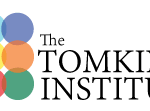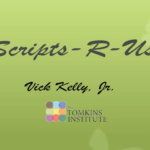Affect Imagery Consciousness. Vol I: The Positive Affects
Tomkins S. (1962). New York: Springer.
Here Tomkins launches his magnum opus. The focal character of affect in motivating is set in contrast to the assumptions of behaviorism and psychoanalysis. Affect as an amplifier of its trigger is a biological mechanism giving an animal moving about in space information on the basis of which appropriate actions may be taken. The human face as the primary site of affect is a two way communication system telling the individual about the world, and telling the world about the individual. These innate affects operate in degrees of intensity. The positive ones dealt with in this volume are interest-excitement and enjoyment-joy. The neutral affect surprise-startle functions to reset attention.
Affect Imagery Consciousness. Vol II: The Negative Affects
Tomkins S. (1963). New York: Springer.
When published in 1963 Volume II of AIC presented a pioneering and radical view of the nature of human motivation. Here the negative affects of distress and shame are delineated. Much attention is given to the way in which the young individual is inadvertently socialized to manage these innate responses, and the various ways in which later, as adults, they manifest the consequences of this socialization. The impact of humiliation receives generous attention.
Affect Imagery Consciousness. Vol III: The Negative Affects: Anger and Fear
Tomkins S. (1991). New York: Springer.
A hiatus of 18 years separated the publication of volume III from volume II of Affect Imagery Consciousness. That gave valuable time for some modification and development of the theory as well as its application in a variety of contexts. The innate affects of anger and fear are center stage in this volume. Each of the nine affects is a major player in authoring the individual’s scripts which are written by the inevitable stimulus-affect-response sequences of everyday life. The years between volume II and volume III gave both the necessity and opportunity for Tomkins to summarize his work. Chapter 1 is especially valuable as he presents there a brief overview of the theory.
Affect Imagery Consciousness. Vol IV: Cognition: Duplication and Transformation of Information
Tomkins S. (1992). New York: Springer.
Tomkins ends Affect Imagery Consciousness with the consideration of Cognition. In doing so memory, perception, action, thought and emotion play their inter-dependent parts in the assembly of the human being. Individual freedom is the consequence of the marriage of affect and cognition, but this freedom is limited by biological and social systems. How imagery at the heart of memory is stored and retrieved receives considerable attention. Appeal is made to see the human being not in isolation but in the dramatic interplay of a bio-psycho-social system.


